U.S. Navy Reviving Atlantic Fleet
Seven years after deactivation, the U.S. Second Fleet will be patrolling the North Atlantic again.
Six years after disbanding it in 2011 in what was arguably a recognition of the assumption at the time that the Pacific and Far East would figure far more significantly in America’s security needs in the future, the United States Navy is bringing back the Atlantic Fleet:
The U.S. Navy has reactivated a fleet responsible for overseeing the East Coast and North Atlantic — an escalation of the Pentagon’s focus on a resurgent Russia and its expanding military presence.
The 2nd Fleet, deactivated in 2011 to preserve funds for new ships, will resume operations in Norfolk on July 1, Chief of Naval Operations Adm. John Richardson told reporters Friday.
“This is a dynamic response to the dynamic security environment,” Richardson said onboard the carrier George H.W. Bush. “So as we’ve seen this great-power competition emerge, the Atlantic Ocean is as dynamic a theater as any and particular the North Atlantic, so as we consider high-end naval warfare, fighting in the Atlantic, that will be the 2nd Fleet’s responsibility.”
Navy officials had previously recommended reactivating the fleet as part of broader reviews following last year’s row of deadly collisions among ships in the Japan-based 7th Fleet.
In a separate statement, Richardson invoked Defense Secretary Jim Mattis’s national-defense strategy as key guidance to reestablish the fleet, which will extend halfway across the Atlantic until it meets the area of responsibility for the Italy-based 6th Fleet.
Mattis’s framework, released in January, said “long-term strategic competitions” with Russia and China are the top Defense Department priorities as the Pentagon seeks to pivot away from counterinsurgencies that have consumed funding and exhausted resources since Sept. 11, 2001.
Defense officials and analysts have said those operations took attention away from modernizing the military, allowing Russia and China to close the technological gap with newer and deadlier weaponry.
In that time, Russia has occupied Crimea and Ukraine and provoked a host of hostilities against the West, including cyberattacks and interference in elections in Europe and the United States. That also includes an uptick of Russian submarines prowling for undersea telecommunications cables used by NATO.
The reactivation of the 2nd Fleet signals the Navy’s desire to “operate more powerfully and credibly in the North Atlantic,” Bryan McGrath, a former destroyer commander and deputy director of the Center of American Seapower at the Hudson Institute, said Saturday.
One concern the 2nd Fleet will immediately address: the threat from a now-modest number of Russian nuclear attack submarines capable of cruising in the depths off the East Coast, McGrath told The Washington Post.
Submarines like the nuclear-powered K-329 Severodvinsk are equipped with hypersonic anti-ship missiles and nuclear-capable missiles that can reach any city on the Eastern Seaboard within range, he said.
Russian submarines can also create a hazard of mines and anti-submarine missiles that would complicate a deployment in support of NATO allies, risking an escalation of tension with U.S. cities in range, he said.
Patrols will likely start soon after and involve manned and unmanned surface ships, attack submarines and air surveillance by P-8 Poseidon aircraft, a sub-hunting warplane.
(…)
The move also arrives alongside broader NATO strategies to counter Russia. In a separate announcement Friday, the Pentagon said it proposed a NATO Joint Force Command for the Atlantic in Norfolk.
“To quote Ned Stark: ‘Winter is coming,'” McGrath said, referring to a “Game of Thrones” character who warns of approaching conflict. “There is a general sense a revisionist power in Russia is dedicated to opposing the U.S. in many arenas, and military opposition is increasingly one of them.”
This move appears to be the latest recognition on the part of the United States that the period of peace that we saw between the United States and Russia in the wake of the collapse of the Soviet Union is effectively over. For better or worse, Russia under Vladimir Putin, while far from being the military threat that it was during the height of the Cold War, has decided that taking a more aggressive stance toward the West is in its interests at this time. We saw that in the wake of the Sochi Olympics when Russia effectively staged a coup in Crimea and seized that peninsula from Ukraine, to whom it had been transferred in the 1950s and then followed that up by funding, arming, and training guerrilla forces in eastern Ukraine that are sympathetic to Russia and to the pro-Russian governing that was ousted in 2014. In addition to those actions, Russia has also expanded its military support for the Assad government in Syria and resumed threatening flight activities by fighters and bombers that mirror those that were a regular occurrence during the Cold War. In the light of all of this, the decision to reactivate the fleet primarily responsible for security in the North Atlantic would seem to make sense from both a strategic and a symbolic point of view. Strategically, the move helps to protect the sea lanes in the North Atlantic, where Russian submarine activity has been on the upswing in recent years, which would be crucial to any efforts to resupply forces in Europe should the need arise. Symbolically, it sends a signal to Russia that the West isn’t going to be intimidated by their more aggressive stance even if one assumes that it’s all more for show than a realistic threat that the Russians could carry out.
The announcement is also significant for what it says about NATO and the current state of America’s longest-standing, and most important, international alliance. For much of the President’s first year in office, there were significant doubts about just how committed President Trump was to NATO and its principle of mutual defense. It was also apparent that he either doesn’t understand how NATO works, or that he was deliberately misrepresenting it when he made comments about other NATO members ‘not paying their dues’ to NATO. In reality, of course, the members of NATO don’t pay dues as part of their obligation to the organization. Rather, there has been a long-standing agreement that members would devote at least 2% of their Gross Domestic Product to their defense budget. This would still mean, of course, that the nations such as the United States, the United Kingdom, France, and Germany, would end up spending far more on defense than smaller nations such as Belgium, The Netherlands, or the former Warsaw Pact nations in Eastern Europe. However, the target was seen as a sign that each nation would be committed in some sense to contributing to the collective defense ethos of the organization. In trips to Europe in his first year, Trump was vague about just how committed he was to NATO’s collective defense ethos, but this decision arguably answers that question to some degree and demonstrates that, at least when it comes to national defense, Trump is listening to his Secretary of Defense and his Generals rather than following his own misguided ideas.
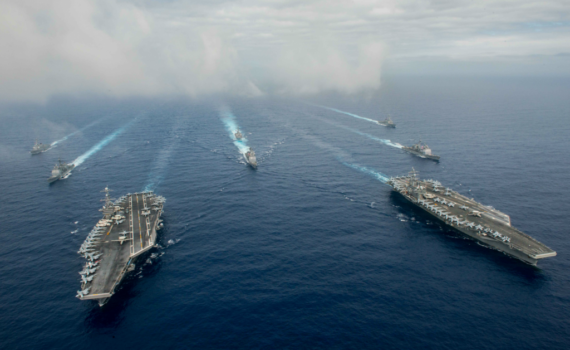

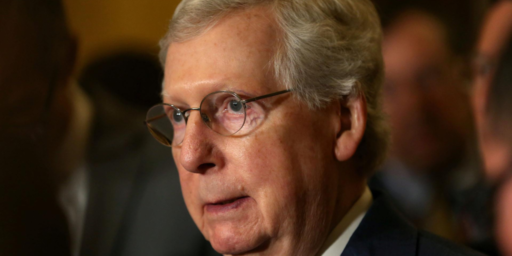
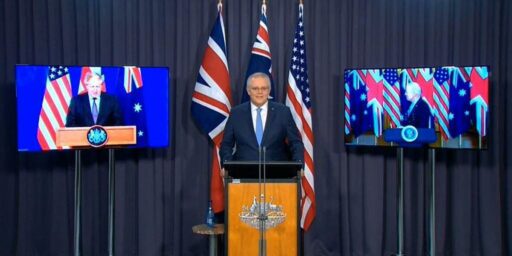
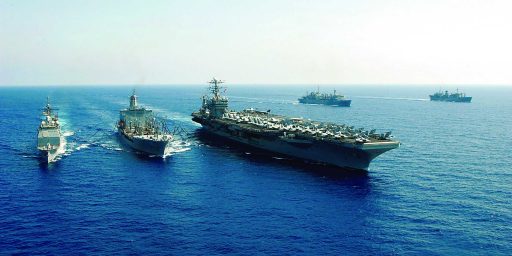

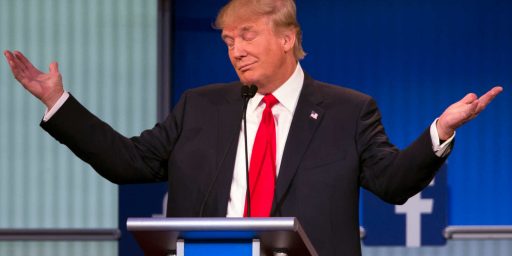
Thank god! Those German U-boats have been the scourge of the North Atlantic!
(/sarcasm off)
What the hell… Antiquated technology.
So after 7 years of weakness and giving Russia largely free reign in Europe, Trump is actually acting against Russia’s interests.
I disagree that using the word dues is deliberately misrepresenting, as you put it. Too many NATO nations aren’t (or weren’t, the number has increased since Trump became president, all according to CNN) spending the required 2% of their GDP on defense. Is that word 100% accurate so far as how those nations spend money? No, I suppose not. But it is entirely accurate regarding nations not fulfilling their obligations under the treaty. It certainly conveys the correct meaning. (Tho I suppose you’d count it as another Lie from Trump.)
@TM01:
What Donald is confused about is “their” and “their”. He repeatedly has implied that some member countries are not paying (to NATO) a fair share.
Notice that it is a target and that member nations agreed to try to achieve that goal by 2024.
Yea, so Trump suggesting a legal obligation, the consequence of failure resulting in the US reneging in treaty responsibilities, is just more political BS to roil his base.
Russia has made no hostile move toward the United States, and our government has no business pointing more weapons at them. But of course, we need a new threat to justify the $2 trillion we’re spending on a more lethal nuclear arsenal, we need an excuse for grotesque conventional military budgets that expand forever and we need an excuse to frighten the American people into passivity and compliance.
This Trump’s: “See, nobody has done more to take action
against Russia than I have!” move.
@Ben Wolf: wait…I thought Russian election interference was an Act of War. That’s I keep hearing from Democrats.
@TM01: You must be one of those commie sympathizers.
@al-Ameda: The quoted WAPO story doesn’t even mention Trump. This sounds like it could have been handled as a matter of internal organization within the Navy. I wonder what, if anything, Mattis has told Trump about this.
@Davey Jones Footlocker:
Facetious, but timely.
I read a blog called WW2today.com. Every day it briefly recounts some event, usually with a first person account, of what happened in WW2 75 years ago on this date. May 6 was the end of the week long battle of Convoy ONS 5. This westbound convoy came into contact with over 30 U boats and lost 13 of 42 merchant ships in the convoy. But the escorts sank 6 boats and damaged 7, a rate of loss the Kriegsmarine couldn’t begin to sustain (more so in personnel than boats). This was the beginning of what the Kriegsmarine called Black May. May 6, 1943 is generally noted as the turning point in the Battle of the Atlantic.
trump wanted to (did?) arbitrarily give the military another ~$60B a year. All kindsa pointless stuff you can reboot with that kinda scratch.
Rather OT, but I think this is the significant story that many have missed: Look at the timelines.
@michael reynolds: Josh Marshall is starting to connect the dots at TPM
@SKI: Would explain the central issue, why Trump’s been so eager to please Putin.
I guess that I should sleep better at night.
test for special characters